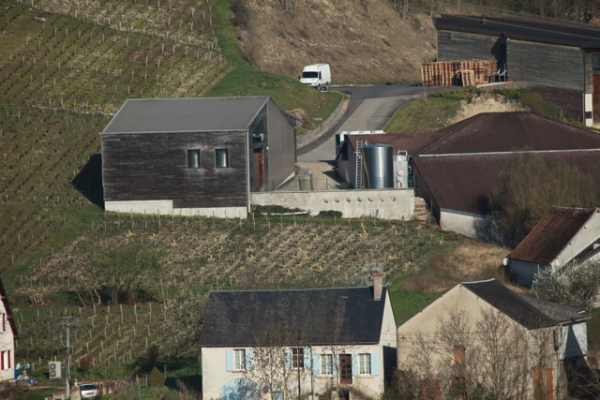- First published on Les 5 du Vin:
Sunday, 10 May 2015
The success of Sancerre
A week yesterday my co-Cinq colleague David Cobbold reported on a tasting of wines from the Loire's Central Vineyards. He suggested that Sancerre producers were perhaps resting on their laurels and that the size of the Central Vineyard appellations corresponded to their success.
No doubt there are producers in Sancerre who sit on the appellation's current reputation but this is far from true for the leading lights, who are constantly looking to improve their wines both through work in the vineyards and investment in equipment in the wineries. Anyone who wants to see the latest winery equipment used in the Loire heads to Sancerre. Unlike some wineries in Italy, parts of Spain, Napa or Chile you won't find here modern day wine cathedrals designed at great expense to highlight the owners' deep pockets. In Sancerre and elsewhere in the Central Vineyards there is happily a marked absence of bling. Here wineries are functional. Producers, like Alphonse Mellot and the Vacheron family, in the town of Sancerre itself are naturally constrained by the narrow streets, tightly packed houses and steep slopes. This also used to be the case in Chavignol but recently there has been a trend for some producers, for instance Gérard Boulay and Thomas-Labaille to build new wineries outside the Sancerre's capital city, especially on the road between Chavignol and Saint-Satur. Even with greater space available these are functional buildings as is the new dairy built by Rians after they acquired the historic Crottin cheese maker – Dubois-Boulay.
The ever-expanding Henri Bourgeois winery must the most spectacular development in the region. When I first visited the domaine in October 1989 they had a relatively small winery next to Chavignol's church. The original winery is still there but its has expanded very considerably up the hill. Again the buildings are functional and designed for easy working. Of course there is expensive kit inside but there for a purpose. The new arrangements for receiving and selecting their Pinot Noir grapes are coming through in the wines.
During my brief stay in Sancerre in April I visited three producers – Pascal Joulin (Domaine Michel Vattan) in Maimbray, Clément Pinard (Domaine Vincent Pinard) in Bué and Arnaud Bourgeois (Henri Bourgeois) in Chavignol. I largely concentrated on tasting the 2014s, which is a very good vintage here and was confirmed by my visits. What was impressive was the determination of all three to continue to improve the quality of their wines. At Domaine Vincent Pinard, for instance, the top cuvée of their Pinot Noir is destemmed by hand using a team of around 20. Naturally this attention to detail doesn't come cheap – the 2012 Vendanges Entières sells for 33€ a bottle at the domaine. Would you find the same quality, however, in Burgundy for this price?
Given Sancerre's current success and wealth it is easy to forget how poor and backward the area was still at the end of the 1940s and early 1950s. I always remember many years ago André Dézat recounting the lack of electricity in the early 1950s, that water had to be fetched from the well and that for most families in the area they made a living of sorts on a few hectares of polyculture. It was the arrival of the first tractors in the 1950s that allowed the dynamic to start to expand their holdings. This was also the epoch when the leading lights of the appellation started to take their wine up to Paris and so established a reputation. La Maison des Sancerres in the town of Sancerre does an excellent job covering the history of this period along with separate explanations of the geology of the area. This is the starting point for understanding Sancerre.
It should not be surprising that Sancerre is the easily the largest appellation in the Central Vineyards. Simply it has the biggest area of land suited to grape production. The suitable area in Pouilly is much more limited, while for Menetou-Salon it is largely the ridge that runs from Morogues to the town of Menetou-Salon – to the south there is too much clay and there are extensive forests to the north. Now there are 465 hectares planted but back in 1991 Gilbert & Gaillard in their Guides des Vins: Pays de La Loire listed Menetou at 100 hectares.
To the south west in the Cher Valley the land appropriate for vines for the ACs of Quincy and Reuilly is very much limited. For Quincy the focus is on the gravel banks laid down by the Cher and Reuilly relies on the the slopes facing the River Arnon, otherwise this is an area of cereal production. Both ACs virtually disappeared during the 1980s – G&G record 60 ha for Quincy and just 40ha for Reuilly. Following a welcome renaissance Quincy today has some 224 hectares planted with Reuilly on 186 hectares.
Santé!
Subscribe to:
Post Comments (Atom)






No comments:
Post a Comment